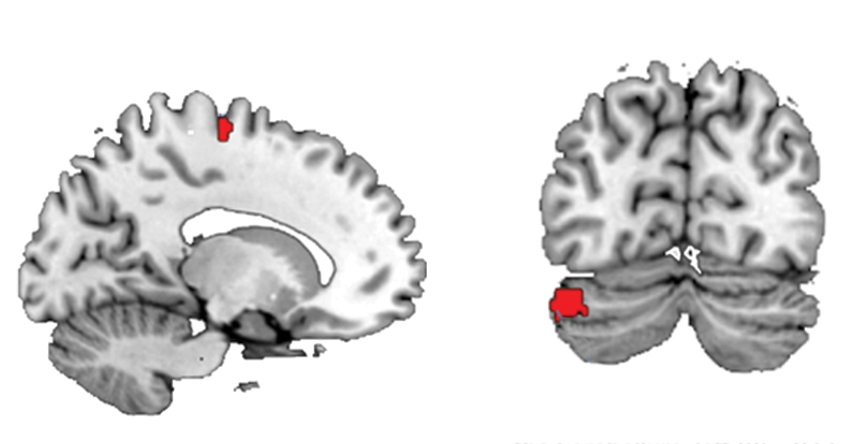
THIS ARTICLE IS MORE THAN FIVE YEARS OLD
This article is more than five years old. Autism research — and science in general — is constantly evolving, so older articles may contain information or theories that have been reevaluated since their original publication date.
A spate of studies over the past decade hint that autism looks different in boys than it does in girls. In particular, boys with autism appear to have more severe restricted and repetitive behaviors than do girls with the disorder.
A new study, published 4 September in Molecular Autism, supports this observation and adds a twist1. It shows that sex differences in the severity of restricted and repetitive behaviors track with differences in the structure of brain regions that control movement.
“This suggests to us that girls and boys differ [not only] in their clinical manifestations and characteristics, but also in their underlying neurobiology,” says lead investigator Vinod Menon, professor of psychiatry and behavioral sciences at Stanford University in California. “The next step is to figure out what exactly gives rise to these differences.”
The findings need to be replicated, but they raise the possibility that girls and boys with autism would benefit from different treatments, says Kevin Pelphrey, professor of psychology at the Yale Child Study Center, who was not involved in the work.
The study compared symptoms among 128 girls and 614 boys with autism included in the National Database for Autism Research — a U.S. government-funded repository of results from autism studies. The children range in age from 7 to 13 years and have similar levels of intelligence.
The researchers found no sex differences in social deficits or communication skills, or in levels of total autism severity. However, they did find that girls have less severe restricted and repetitive behaviors than boys do.
Distinct structures:
The study also found less severe restricted and repetitive behaviors in girls using data from the Autism Brain Imaging Data Exchange — a repository of brain scans and behavioral information. This database allowed the researchers to look at brain structure among 25 boys and 25 girls with autism, and relate it to the severity of their symptoms. They also looked at control scans from 19 boys and 19 girls without autism, matched for intelligence levels.
After comparing boys and girls with autism to each other, and those without the disorder to each other, the scientists found no sex differences in the overall volume of various regions. They did, however, find some differences between boys and girls from each group in the structures of several key brain regions.
One important caveat is that the researchers did not directly compare boys with and without autism, or girls with and without autism, notes Meng-Chuan Lai, assistant professor of psychiatry at the University of Toronto, who was not involved in the study. As a result, “it is difficult to know how autism manifests in the brain differently in males and in females,” he says.
Among controls, the differences between boys and girls include regions dedicated to vision and touch, and part of the hippocampus, an interior memory hub. The researchers also saw structural divergence in two movement centers, the putamen and cerebellum. The findings mesh with previously reported sex differences in the brains of typically developing boys and girls2.
Among children with autism, the sex-related differences cluster in brain areas that control movement, such as the motor cortex and the cerebellum. They also span brain regions dedicated to social behaviors, such as the fusiform face area on the brain’s surface and the brain’s interior emotion hub, the amygdala.
Small overlap:
The sex discrepancies in structure among the children with autism and controls overlap in only one region: the cerebellum.
“This demonstrates that sex difference in autism differs from that in the typical population, suggesting that the diagnostic status of autism has a role in this,” Lai says.
The researchers then looked at the relationship between brain structure and autism symptom severity. In girls with autism, they detected certain spatial patterns in the motor cortex and the cerebellum that correlate with more severe restricted and repetitive behaviors. Among boys with the disorder, patterns in the structure of the putamen tracked with more extreme restricted and repetitive behaviors.
The findings suggest that different brain networks underlie restricted and repetitive behaviors in boys and girls with autism, which might explain why the two groups show differences in symptom severity, says Christine Ecker, lecturer in neuroimaging at King’s College London, who was not involved in the study.
It’s unclear whether the sex differences in brain structure cause differences in behavior, however. These anatomical observations may instead be a consequence of the distinct ways repetitive behaviors manifest in boys and girls with autism, Ecker says.
By joining the discussion, you agree to our privacy policy.